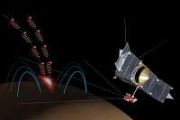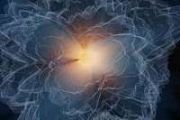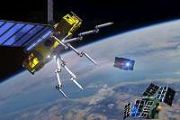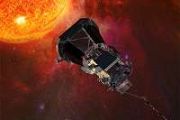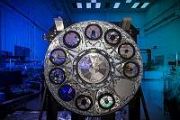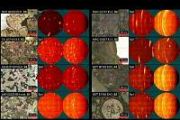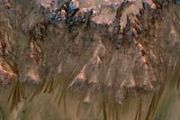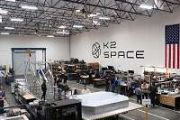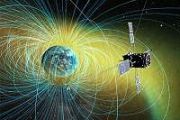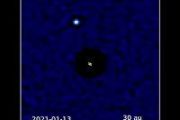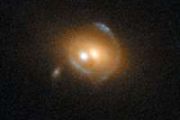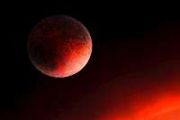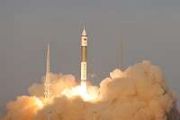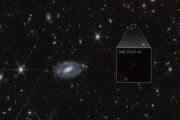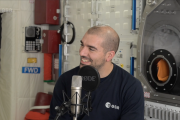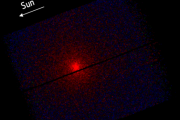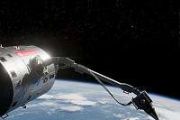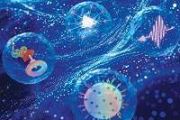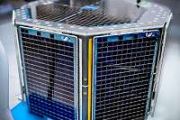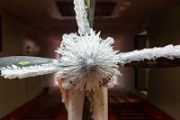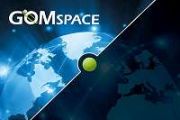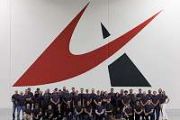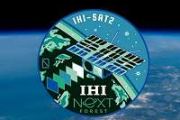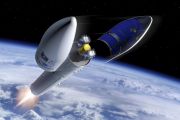
Copernical Team
NASA explores a winter wonderland on Mars
 When winter comes to Mars, the surface is transformed into a truly otherworldly holiday scene. Snow, ice, and frost accompany the season's sub-zero temperatures. Some of the coldest of these occur at the planet's poles, where it gets as low as minus 190 degrees Fahrenheit (minus 123 degrees Celsius).
Cold as it is, don't expect snow drifts worthy of the Rocky Mountains. No region of Mars g
When winter comes to Mars, the surface is transformed into a truly otherworldly holiday scene. Snow, ice, and frost accompany the season's sub-zero temperatures. Some of the coldest of these occur at the planet's poles, where it gets as low as minus 190 degrees Fahrenheit (minus 123 degrees Celsius).
Cold as it is, don't expect snow drifts worthy of the Rocky Mountains. No region of Mars g Hickenlooper Bill to clear space junk, protect space exploration, passes Senate unanimously
 U.S. Senator John Hickenlooper applauded Senate passage of his Orbital Sustainability (ORBITS) Act, a bipartisan bill to establish a first-of-its-kind demonstration program to reduce the amount of space junk in orbit. The bill passed the Senate unanimously.
"From satellite communications to rockets carrying humans into deep space, space debris is a massive threat to space operations," said
U.S. Senator John Hickenlooper applauded Senate passage of his Orbital Sustainability (ORBITS) Act, a bipartisan bill to establish a first-of-its-kind demonstration program to reduce the amount of space junk in orbit. The bill passed the Senate unanimously.
"From satellite communications to rockets carrying humans into deep space, space debris is a massive threat to space operations," said NASA begins construction on asteroid-detecting space telescope
 Construction is set to begin on NASA's Near-Earth Object Surveyor, a space telescope designed to search for hard-to-find comets and asteroids that approach the area near Earth.
The NEO Surveyor passed a technical programmatic review and will now move into the construction phase.
"The mission supports the objectives of NASA's Planetary Defense Coordination Office (PDCO) at NASA He
Construction is set to begin on NASA's Near-Earth Object Surveyor, a space telescope designed to search for hard-to-find comets and asteroids that approach the area near Earth.
The NEO Surveyor passed a technical programmatic review and will now move into the construction phase.
"The mission supports the objectives of NASA's Planetary Defense Coordination Office (PDCO) at NASA He Video: Flight control, space weather and debris: What an astronaut needs to know
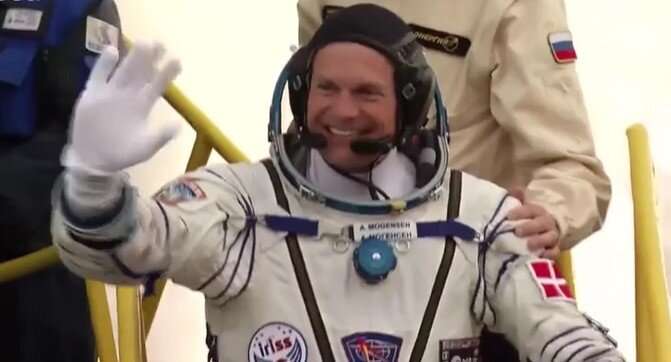
Recently, Andreas Mogensen, now getting ready for his "Huginn" mission to the ISS in 2023, stopped by ESA's ESOC mission control center in Darmstadt, Germany, to meet with some of the experts who keep our satellites flying.
Andreas usually works at NASA's Johnson Space Center in Houston as an ISS "capcom," and we don't often see him in Europe. A few months back, while returning to Germany for some training at ESA's Astronaut Center in Cologne, we seized the opportunity to ask him if he'd like to stop over in Darmstadt for a look behind the scenes at mission control, and he immediately answered, "yes!"
Andreas studied aeronautical engineering with a focus on "guidance, navigation and control of spacecraft" and we thought he'd be delighted to meet with the teams at mission control doing precisely that sort of work for our robotic missions.
We figured he'd also enjoy meeting colleagues from our Space Safety program, especially the ones working on space debris and space weather, as these are crucial areas that influence the daily life of astronauts on the ISS.
Astronomers may have uncovered how galaxies change their shape
 Researchers may have answered a decades-old question about galaxy evolution, leveraging the power of artificial intelligence (AI) to accelerate their research.
Ever since the Hubble Sequence, that classifies galaxy morphologies, was invented in 1926, astronomers have been refining our understanding of galaxy evolution and morphology as our technology advances.
By the 1970's, research
Researchers may have answered a decades-old question about galaxy evolution, leveraging the power of artificial intelligence (AI) to accelerate their research.
Ever since the Hubble Sequence, that classifies galaxy morphologies, was invented in 1926, astronomers have been refining our understanding of galaxy evolution and morphology as our technology advances.
By the 1970's, research Kepler's first exoplanet is spiraling toward its doom
 For the first time, astronomers have spotted an exoplanet whose orbit is decaying around an aging star. The doomed world appears destined to spiral closer and closer to its expanding star until they collide, obliterating the first exoplanet discovered by the Kepler space telescope.
The discovery offers new insights into the slow process of planetary orbital
For the first time, astronomers have spotted an exoplanet whose orbit is decaying around an aging star. The doomed world appears destined to spiral closer and closer to its expanding star until they collide, obliterating the first exoplanet discovered by the Kepler space telescope.
The discovery offers new insights into the slow process of planetary orbital Astronomers identify the ancient heart of the Milky Way galaxy
 A group of MPIA astronomers has managed to identify the "poor old heart of the Milky Way" - a population of stars left over from the earliest history of our home galaxy, which resides in our galaxy's core regions. For this feat of "galactic archaeology", the researchers analyzed data from the most recent release of ESA's Gaia Mission, using a neural network to extract metallicities for two milli
A group of MPIA astronomers has managed to identify the "poor old heart of the Milky Way" - a population of stars left over from the earliest history of our home galaxy, which resides in our galaxy's core regions. For this feat of "galactic archaeology", the researchers analyzed data from the most recent release of ESA's Gaia Mission, using a neural network to extract metallicities for two milli 392D CTS completes its first USEUCOM-focused SPACE FLAG exercise
 The 392d Combat Training Squadron under Delta 1, Space Training and Readiness Command, recently completed SPACE FLAG 23-1, which provided combat training to both U.S. and Coalition forces. SPACE FLAG 23-1, which ran from Dec. 5-16, was the third Coalition SPACE FLAG and the 16th iteration of the SPACE FLAG exercise series. 23-1 was the first in the SPACE FLAG program to exercise combat tactics i
The 392d Combat Training Squadron under Delta 1, Space Training and Readiness Command, recently completed SPACE FLAG 23-1, which provided combat training to both U.S. and Coalition forces. SPACE FLAG 23-1, which ran from Dec. 5-16, was the third Coalition SPACE FLAG and the 16th iteration of the SPACE FLAG exercise series. 23-1 was the first in the SPACE FLAG program to exercise combat tactics i NASA sets table for safe air taxi flights
 Edwards AFB CA (SPX) Dec 22, 2022
Tabletop exercises allow researchers to explore options and test scenarios in fields from military strategy and cybersecurity to disaster response planning. Now, NASA is using tabletop exercises to test how electric air taxis will fit safely into the national airspace - allowing passengers to one day hop across town or to a neighboring city by using new highway
Edwards AFB CA (SPX) Dec 22, 2022
Tabletop exercises allow researchers to explore options and test scenarios in fields from military strategy and cybersecurity to disaster response planning. Now, NASA is using tabletop exercises to test how electric air taxis will fit safely into the national airspace - allowing passengers to one day hop across town or to a neighboring city by using new highway Momentus announces 2nd Services Agreement with CUAVA
 Momentus Inc. (NASDAQ: MNTS), a U.S. commercial space company that plans to offer transportation and other in-space infrastructure services, has announced an agreement with the Australian Research Council Training Centre for CubeSats, Uncrewed Aerial Vehicles, and their Applications (CUAVA) for the transportation of the Waratah Seed WS-1 CubeSat to low-Earth orbit in October 2023.
The Wara
Momentus Inc. (NASDAQ: MNTS), a U.S. commercial space company that plans to offer transportation and other in-space infrastructure services, has announced an agreement with the Australian Research Council Training Centre for CubeSats, Uncrewed Aerial Vehicles, and their Applications (CUAVA) for the transportation of the Waratah Seed WS-1 CubeSat to low-Earth orbit in October 2023.
The Wara 
